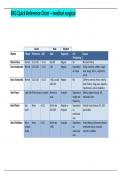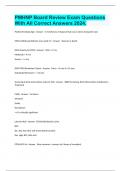Unit 4 - Assignment 3
C: Explore manufacturing techniques and testing methods for an organic solid.
Ethanoic acid, toluene, and 2-hydroxbenzoic acid are mixed and fed through a reactor at a
factory. After that, water and cooling water are added, and the mixture is filtered. The solids
are washed and dried before being filtered again, packed, and aspirin is created. To
complete the process, a reactor, acetic acid, salicylic acid, and an acetic anhydride are used.
The optimal temperature for this reaction is 85 degrees Celsius, which is kept constant
throughout the process by using a continuous heat source, allowing the reaction to finish
entirely rather than partially. The solution is allowed to cool once the reaction has
completed, allowing the reaction to complete and crystals to form. These crystals are then
filtered out with a Buchner funnel. The filtered crystals are then cleaned and dried with
distilled water. The finished product is readily compressible into tablet form. In industries,
organic solids can be manufactured in a variety of methods. Filter presses, freeze drying,
and spray drying are examples of these. Commented [SC1]: Good work (P6)
Spray drying using hot gas is used to make dry powder. This process involves spraying a
liquid or slurry into the hot gas using an atomizer or spray nozzle while air is being pushed
in. The hot drying gas can either flow with or against the liquid, but the faster drying time
that results from flowing with the liquid is more efficient. This approach is commonly used
in a range of sectors, including medicines and food.
Freeze drying is a four-step low-temperature dehydration process. It entails freezing the
product, then lowering the pressure and sublimating the ice. Sublimation is the process of
converting a solid to a gas without first going through the liquid phase. The first stage is pre-
treatment, which takes place prior to freezing. This might include concentrating the product
or adding preservatives. The second and most critical stage of the freeze-drying process is
freezing. This technique makes use of a freeze-drying machine. In order for sublimation to
occur, the substance must be cooled below its triple point. To produce larger crystals, the
substance should be gradually frozen. If this is not the case, a process called annealing may
occur. The third process is referred to as main drying. During this phase, the pressure is
lowered, and enough heat is given to allow the ice to sublime. It is believed that 95% of the
H2O in the material is sublimated. This technique is done carefully and may take several
days inside the organisation to ensure that the material's structure is not harmed. A partial
vacuum is used to manage pressure, which speeds up sublimation; vapour is produced fast
to fill the partial vacuum. In this pressure range, heat is provided via radiation or
condensation; convection is minimal due to the low air density. The final stage of freeze
drying is secondary drying. During this phase, unfrozen water molecules are cleared. The
temperature is risen above the primary-drying point. This is done to disintegrate any
physicochemical interactions that have formed between the frozen material and the water
molecules. Following this process, the vacuum is usually broken with an inert gas (nitrogen)
to guarantee that no reactions between the gas and the materials occur. The freeze-drying
process is used in a variety of sectors, including pharmaceutical, food, and technical.
, In the industry, aspirin is produced in larger quantities and in batches. A batch procedure is
a short production process. It is done in little volumes and with a small number of
individuals. It is the opposite of a continuous process in that it does not continue after it has
begun. There are two ways for examining aspirin: melting point measurement and crystal
appearance. Commented [SC2]: Good Job (P6)
Testing purity of an organic substance through the measurement of melting point:
By contrasting the range of melting points, it is possible to determine whether a substance
is pure or impure. An apparatus called a Galen-Kamp melting point apparatus is used to
measure melting point. This establishes a substance's melting point by viewing the sample.
When the first sign of melting initially appears till the material or organic solid vanishes,
melting is first measured. The precise temperature at which pure solids melt is typically
within 1 or 2 degrees Celsius of the published value, which can be found in books or on the
internet. Impure substances, however, melt over a wide temperature range. The presence
of another element may raise a substance's melting point. Because inorganic solids melt at
very high temperatures, their testing must take place in industrial settings rather than in
academic laboratories. Chemists can accurately determine the purity of both organic and
inorganic compounds using this method of testing an organic substance. Commented [SC3]: Good research (P6, M5)
Risk assessment:
Hazard Persons at Existing LxS Risk rating Further
risk controls controls if
necessary
and actioned
by/when
Corrosive Anyone Wear PPE 4x4 16 Ask teacher
chemicals holding (Personal for help
chemicals or Protective
in Equipment)
surrounding
area
Spillage Anyone in Be extra 3x3 9 Step away
the area careful when and ask
holding the teacher for
chemicals help
Falling over Anyone All bags stay 3x2 6 Ensure there
bags etc. walking under the is nothing
around desk out of out that
the way people may
trip over
Glass Anyone in Be careful 3x2 6 Step away
equipment the area when and ask
breaking
C: Explore manufacturing techniques and testing methods for an organic solid.
Ethanoic acid, toluene, and 2-hydroxbenzoic acid are mixed and fed through a reactor at a
factory. After that, water and cooling water are added, and the mixture is filtered. The solids
are washed and dried before being filtered again, packed, and aspirin is created. To
complete the process, a reactor, acetic acid, salicylic acid, and an acetic anhydride are used.
The optimal temperature for this reaction is 85 degrees Celsius, which is kept constant
throughout the process by using a continuous heat source, allowing the reaction to finish
entirely rather than partially. The solution is allowed to cool once the reaction has
completed, allowing the reaction to complete and crystals to form. These crystals are then
filtered out with a Buchner funnel. The filtered crystals are then cleaned and dried with
distilled water. The finished product is readily compressible into tablet form. In industries,
organic solids can be manufactured in a variety of methods. Filter presses, freeze drying,
and spray drying are examples of these. Commented [SC1]: Good work (P6)
Spray drying using hot gas is used to make dry powder. This process involves spraying a
liquid or slurry into the hot gas using an atomizer or spray nozzle while air is being pushed
in. The hot drying gas can either flow with or against the liquid, but the faster drying time
that results from flowing with the liquid is more efficient. This approach is commonly used
in a range of sectors, including medicines and food.
Freeze drying is a four-step low-temperature dehydration process. It entails freezing the
product, then lowering the pressure and sublimating the ice. Sublimation is the process of
converting a solid to a gas without first going through the liquid phase. The first stage is pre-
treatment, which takes place prior to freezing. This might include concentrating the product
or adding preservatives. The second and most critical stage of the freeze-drying process is
freezing. This technique makes use of a freeze-drying machine. In order for sublimation to
occur, the substance must be cooled below its triple point. To produce larger crystals, the
substance should be gradually frozen. If this is not the case, a process called annealing may
occur. The third process is referred to as main drying. During this phase, the pressure is
lowered, and enough heat is given to allow the ice to sublime. It is believed that 95% of the
H2O in the material is sublimated. This technique is done carefully and may take several
days inside the organisation to ensure that the material's structure is not harmed. A partial
vacuum is used to manage pressure, which speeds up sublimation; vapour is produced fast
to fill the partial vacuum. In this pressure range, heat is provided via radiation or
condensation; convection is minimal due to the low air density. The final stage of freeze
drying is secondary drying. During this phase, unfrozen water molecules are cleared. The
temperature is risen above the primary-drying point. This is done to disintegrate any
physicochemical interactions that have formed between the frozen material and the water
molecules. Following this process, the vacuum is usually broken with an inert gas (nitrogen)
to guarantee that no reactions between the gas and the materials occur. The freeze-drying
process is used in a variety of sectors, including pharmaceutical, food, and technical.
, In the industry, aspirin is produced in larger quantities and in batches. A batch procedure is
a short production process. It is done in little volumes and with a small number of
individuals. It is the opposite of a continuous process in that it does not continue after it has
begun. There are two ways for examining aspirin: melting point measurement and crystal
appearance. Commented [SC2]: Good Job (P6)
Testing purity of an organic substance through the measurement of melting point:
By contrasting the range of melting points, it is possible to determine whether a substance
is pure or impure. An apparatus called a Galen-Kamp melting point apparatus is used to
measure melting point. This establishes a substance's melting point by viewing the sample.
When the first sign of melting initially appears till the material or organic solid vanishes,
melting is first measured. The precise temperature at which pure solids melt is typically
within 1 or 2 degrees Celsius of the published value, which can be found in books or on the
internet. Impure substances, however, melt over a wide temperature range. The presence
of another element may raise a substance's melting point. Because inorganic solids melt at
very high temperatures, their testing must take place in industrial settings rather than in
academic laboratories. Chemists can accurately determine the purity of both organic and
inorganic compounds using this method of testing an organic substance. Commented [SC3]: Good research (P6, M5)
Risk assessment:
Hazard Persons at Existing LxS Risk rating Further
risk controls controls if
necessary
and actioned
by/when
Corrosive Anyone Wear PPE 4x4 16 Ask teacher
chemicals holding (Personal for help
chemicals or Protective
in Equipment)
surrounding
area
Spillage Anyone in Be extra 3x3 9 Step away
the area careful when and ask
holding the teacher for
chemicals help
Falling over Anyone All bags stay 3x2 6 Ensure there
bags etc. walking under the is nothing
around desk out of out that
the way people may
trip over
Glass Anyone in Be careful 3x2 6 Step away
equipment the area when and ask
breaking











